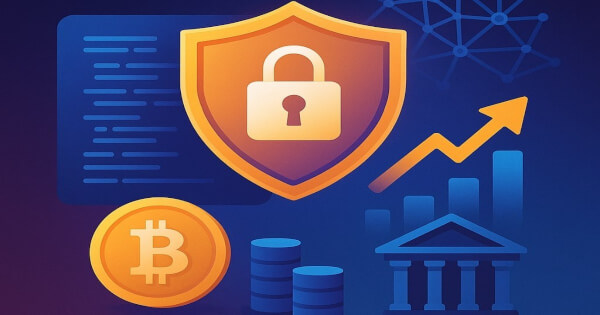Smart Contract Security: The Hottest Trend in Crypto and How It Will Shape Your Investment
Khushi V Rangdhol Oct 26, 2025 20:07
In 2025, smart contract security takes precedence in crypto, driven by frequent, costly exploits. With billions lost this year, investors now prioritize security measures and audit transparency when evaluating projects, ensuring robust defenses against vulnerabilities. As institutional adoption grows, understanding smart contract security becomes essential for any investment strategy.

Introduction: Security Takes Center Stage in Crypto
Crypto markets in 2025 aren’t simply defined by price swings or new tokens. They’re dominated by one subject above all: security. Smart contract exploits have become so frequent and damaging that every developer, investor, and user is now hyper-focused on preventing costly breaches. Just this year, billions of dollars were lost to vulnerabilities, bugs, and hacks. Major incidents, including a $12M Uniswap V4 exploit and widespread issues in zkSync’s logic and flash loans, revealed that even the biggest projects are still exposed. Shockingly, statistics show less than half a percent of stolen funds in Q1 2025 were ever recovered, a figure that has made risk assessment a central part of any serious investment decision in DeFi, NFTs, or even established blockchains like Ethereum and Solana.
Why is Smart Contract Security the Hottest Trend?
The frequency and scale of attacks this year have forced the entire crypto ecosystem to adapt. OWASP’s Smart Contract Top 10 for 2025 details subtle but devastating flaws such as weak access control, price oracle manipulation, logic errors, unchecked external calls, and the ever-present danger of reentrancy attacks. Beyond technical risks, attackers have found new ways to exploit predictable randomness and push contracts into resource exhaustion, even leveraging flash loans to drain entire platforms. The open, composable nature of DeFi protocols means a single flaw can ripple across hundreds of interconnected projects.
Rising Tools, Standards, and Investor Responses
Security tools and practices have responded in kind. MythX, OpenZeppelin Defender, CertiK, Trail of Bits, and many emerging audit services have set new standards for code verification. Platforms like Immunefi and HackenProof now process thousands of bug bounty reports each month, and the highest payouts attract the world’s best white-hat hackers. Developers rely on continually updated security checklists—like Alchemy’s Solidity Best Practices—which emphasize robust authorization, decentralized oracles, and a “design for failure” mindset. Users are increasingly advised to check audit history, demand open bug bounty programs, and use separate wallets for daily transactions and asset storage.
Protocols Setting the Pace
Protocols such as Ethereum, Solana, Binance Smart Chain, and Chainlink are aggressively improving their frameworks to withstand new threats, frequently issuing updates and proposals to address technical and economic risks. Third-party monitoring and alerting services provide real-time anomaly detection, and are now considered must-have infrastructure for any significant crypto project. OpenZeppelin and CertiK remain the most trusted audit platforms, and their public reports are often the deciding factor in user adoption.
The Investment Angle: What Should You Look For?
The implications reach far beyond technical circles. Smart contract security now determines which products survive and thrive, which tokens gain investor trust, and ultimately, how quickly this technology enters mainstream financial systems. Protocols that prioritize audit transparency and rapid response to new exploits shape the evolving landscape, while users become more sophisticated in how they evaluate risks and opportunities. For anyone entering crypto—whether deploying, investing, or simply transacting—the priorities have changed. Platforms without recent audits or transparent bounty programs should be approached with caution, and investors must look at a protocol’s real history of responding to breaches. Developers must implement rigorous access controls, enroll in active bug bounty campaigns, and lean on decentralized solutions for oracles and randomness. Wallet safety is non-negotiable: using trusted hardware, setting strong permissions, and segregating high-value assets are the new baseline.
Conclusion: Security as the New Foundation
Smart contract security is now the heartbeat of blockchain innovation. It defines market winners, limits losses, and protects community trust. As crypto adoption grows and institutional money flows in, only projects with robust, adaptive, and transparent security standards will set the pace. With billions at stake and mainstream attention intensifying, understanding and prioritizing smart contract security is no longer an option—it’s the foundation of every smart investment in 2025.
Sources: Smart Contract Security in 2025 - CryptoAdventure, Smart Contract Bug Bounties Statistics 2025 - CoinLaw, OWASP Smart Contract Top 10, Alchemy: 12 Solidity Smart Contract Security Best Practices, Crypto Wallet Security Checklist 2025 - Ledger, OpenZeppelin Access Control Docs, QuillAudits 2025 Crypto Exploits & Breaches
Image source: Shutterstock
.jpg)